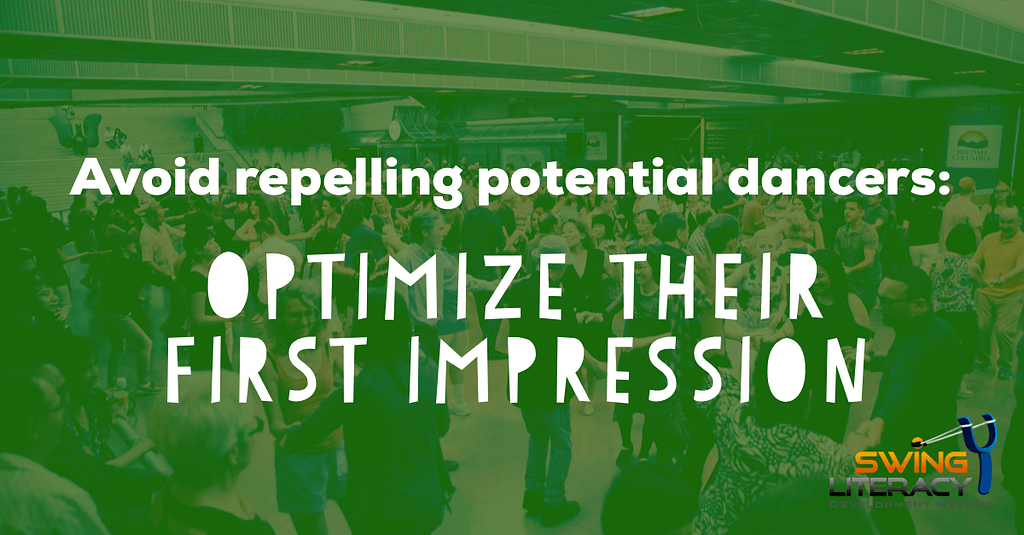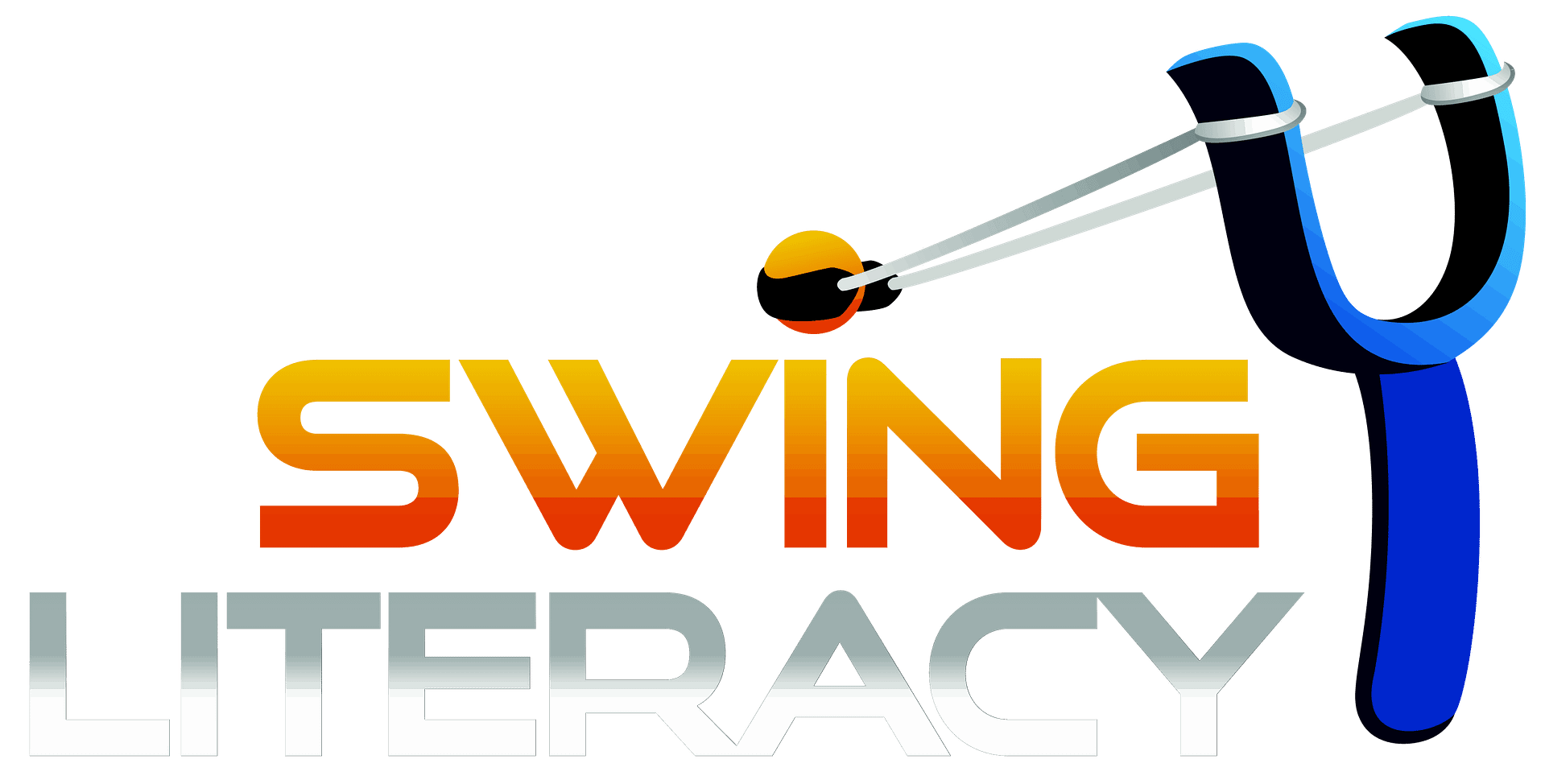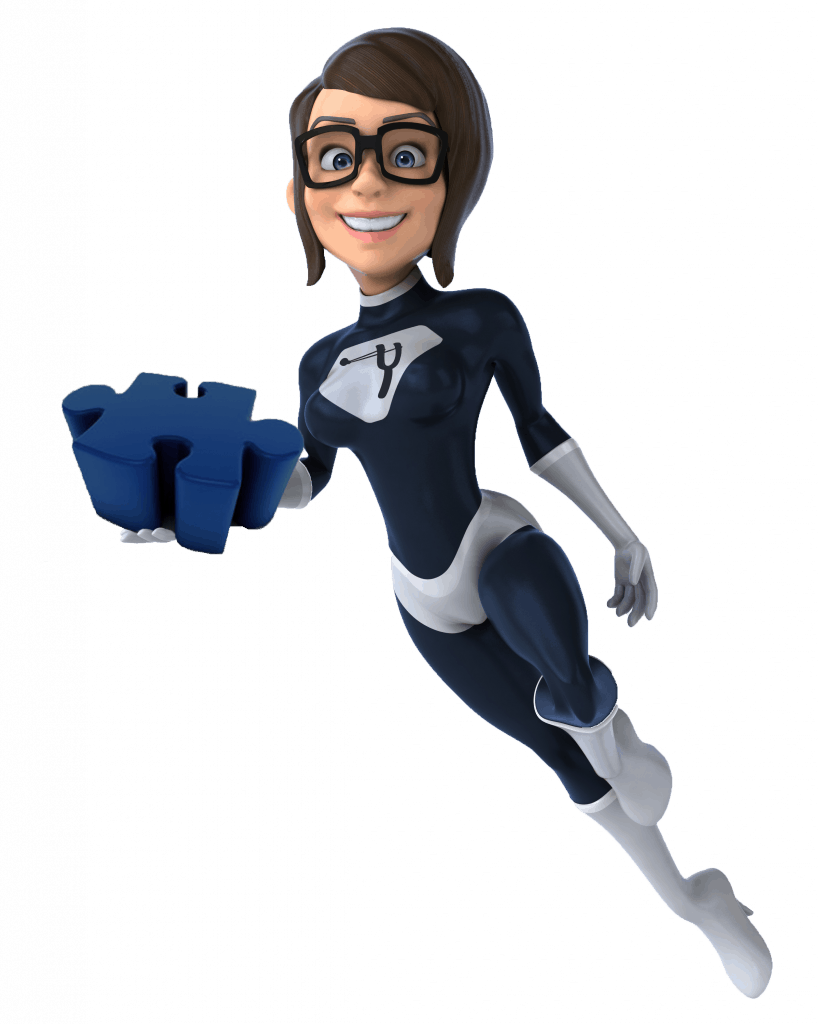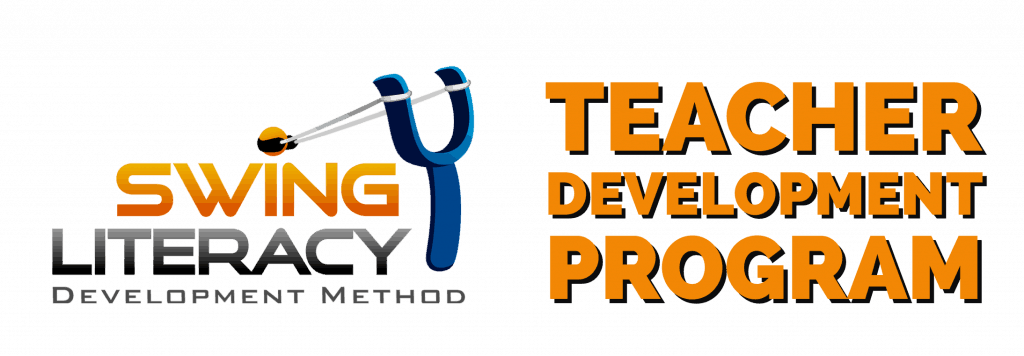No products in the cart.

Avoid repelling potential dancers
Reading Time: minutes remaining
You want to attract more dancers to WCS, right? You need more bodies walking in the door, and then you need them to come back after their first class.
Of course, the way you teach the class will make a huge difference: traditional methods are proven to be limited in their effectiveness, so you need to focus on a skill development approach like we teach in Swing Literacy…
But what about the non-teaching aspects? What can you do to make sure you are attracting and not repelling potential new students before you even have a chance to teach them properly?
Think:
What was your opinion of WCS when you first saw it?

My Story
I was unimpressed, and I almost didn’t pursue it.
I was a university student, and I had been taking ballroom teacher training classes. When anyone asked what my favourite dance was, there was no clear standout, so I would shrug and tell them Hustle or ChaCha because I liked the energy and the music.
Our instructor trainer taught us WCS last, because he said it was the hardest of the dances (but mostly because he was only just starting to learn authentic WCS himself). In order to introduce us to WCS, he took us on a field trip to the local Swing Club. Here was my experience:
- I walked in to the venue which was a seniors’ community centre, with 1980s decor and flourescent lighting.
- I heard music I did not recognize that sounded more like I should be riding a horse than dancing.
- I saw no one my own age, the next youngest person was at least 10 years older than me, and the majority of the room were my parents' age.
- The couples on the floor looked like shuffling zombies – flat, marching, slowly walking back and forth in the slot.
- The dancers had consterned facial expressions, they were not even looking at each other, and completely ignoring the music.
- Nobody talked to us when we walked in. I got invited to dance a few times but my friend I came with got ignored for most of the night.
There was zero appeal for me. I much preferred to go back to my Hustle and ChaCha which felt “younger”, more athletic, exciting, and musical.
That was the moment I made a decision about West Coast Swing. And it wasn’t a positive one.
Can you imagine the course of my future if I had walked away at that moment?
No WCS for Tessa = no events, no points, no famous YouTube video, no ascent to Champions, no meeting Myles, no Showcase, no USOpen, no wedding, no teaching, no travel, no impact on students worldwide, no teacher training, maybe even no WCS for YOU.
Fortunately, our trainer insisted that we go down to a convention to get proper training. So I took 4 private lessons to get enough basics to keep up, then on blind faith, I went to Seattle Easter Swing.
Not only was the environment much more conducive to a dance party, but I saw more people my own age and I got to dance to music I could relate to. I experienced workshops for the first time and heard the teachers talk about character of dance, partnership, and musicality.
The moment that sealed the deal was when I watched J&T performing “I’m Outta Love” for their first time out of Juniors. I was blown away, jaw on the floor. I was shocked – this looked nothing like the WCS I had been introduced to. I was mad and felt deceived – “Why didn’t anyone tell me that THIS is what WCS was? I would have loved it if I had known!” I made a decision right then and there that I would drop everything else and just do WCS. That was the beginning of the rest of my life.
When I came back home, I took leadership in the community to start new dance parties, classes, and peer group practices, and was very careful to consider and tailor new dancers' first impressions.

Takeaway Teaching Tips
As teachers, the branding of WCS is in our hands. This is a big responsibility, because this will determine people’s futures. But in order to capture the attention of potential new dancers, we need to make sure their first impression is 1. Accurate, and 2. Positive.
Look at your scene from an outsiders’ perspective:
- Is your venue warm & welcoming? Clean? Modern? Or is it sketchy? Bright & sterile? Run-down? Dark & intimidating?
- Is the music representative of the diverse, modern brand of WCS? Or is it sombre? Depressing? Beatless? Cheesy? Imbalanced? Too much oldschool? Too much Blues? Too much Hip Hop?
- Are the dancers doing authentic WCS? Are they dancing in a way that a new person would be impressed by? Or are they missing the character-of-dance elements that “sell” WCS? Are all the good dancers hiding in the corner where people walking in can’t see them?
- Are the people having FUN? Are they laughing, socializing, and expressing themselves? Or are they concentrating, fixated on their patterns and footwork, ignoring their partners and the music?
- Is there a welcoming culture? Do new dancers get flagged at the door and given a little orientation? Do your regulars know to ask new people to dance? Or are they snobby to new people?
There are ways to manage ALL of these aspects, and if you have goals of attracting more dancers and create an upward spiral of growth, it is in your best interest to optimize each of them. You never know when the next Tessa will walk in your door.
Source:
-Teaching the Skills of WCS, Module 3, Swing Literacy Teacher Development Program
-Creating your social dance culture, Module 6, Swing Literacy Teacher Development Program
www.swingliteracy.com
Want to know exactly how to attract and retain new dancers?
As the source of R&D for teaching WCS, we produce curated resources, live trainings, and digital courses to help teachers teach West Coast Swing in the most effective way possible their students learn faster, better, and easier.





